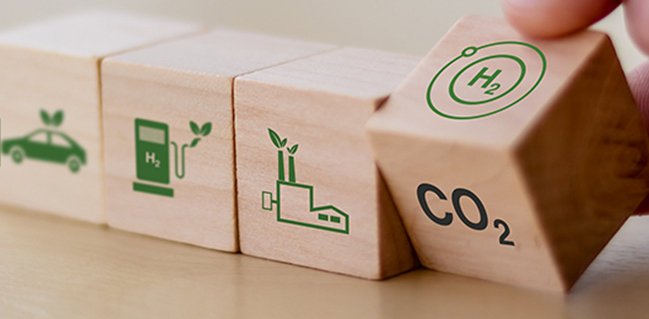Hydrogen is an element that may be used in many different industries due to its versatility. These practical applications of hydrogen show off its adaptability and capacity to deal with a range of energy and environmental issues, particularly when it comes to lowering greenhouse gas emissions and advancing clean energy alternatives.
Download – https://www.marketsandmarkets.com/industry-practice/RequestForm.asp
Hydrogen Uses
3 real-world uses of hydrogen along with details about their growth opportunities, use cases, and supporting statistics:
Hydrogen Fuel Cell Vehicles:
Fuel cell vehicles (FCVs) powered by hydrogen are a substitute for traditional gasoline or diesel automobiles. Fuel cell vehicles (FCVs) use hydrogen to produce electricity, which powers the electric motor in the vehicle. These cars provide zero-emission mobility and can be utilized for commercial fleets, personal transportation, and public transportation.
Growth Opportunities: One major source of greenhouse gas emissions is the transportation industry. Due to their zero tailpipe emissions, hydrogen fuel cell vehicles (FCVs) present a viable way to reduce carbon emissions. In the upcoming years, a large growth in the global market for hydrogen fuel cell vehicles is anticipated. The global market for hydrogen fuel cell vehicles is expected to increase at a compound annual growth rate (CAGR) of 66.2% between 2020 and 2027, reaching $27.5 billion, according to a report by Research and Markets.
Use Cases: Electric motors are powered by hydrogen-fueled fuel cells (FCVs), which use a chemical reaction to produce energy. In comparison to battery-electric vehicles, these cars can travel farther between charges and can be refueled fast. Hydrogen fuel cell vehicles (FCVs) that are sold commercially include the Hyundai Nexo and Toyota Mirai.
Statistics: In 2021, there were more than 10,000 hydrogen fuel cell vehicles (FCVs) operating worldwide. The US, Korea, Germany, and Japan are the countries that embrace FCV at the highest rates. A significant commitment to the expansion of hydrogen fuel cell vehicles is also demonstrated by the significant investments made by governments and manufacturers in hydrogen infrastructure and vehicle development.
Hydrogen Industrial Applications:
Many industrial operations in a variety of areas make extensive use of hydrogen. Among the particular instances are:
Ammonia Production: In the Haber-Bosch process, hydrogen is utilized to mix with nitrogen to make ammonia, which is mostly utilized in fertilizer manufacture.
Refineries: Refineries use hydrogen to purge petroleum-based products like gasoline and diesel of contaminants.
Chemical Industry: The synthesis of methanol, a feedstock for numerous chemicals and fuels, requires hydrogen as a necessary ingredient. Other compounds like hydrochloric acid and hydrogen peroxide are also produced using it.
Growth Opportunities: The demand for hydrogen is predicted to increase as a result of decarbonization initiatives, as it has numerous industrial applications. For instance, ammonia, methanol, and other compounds are produced in the chemical industry using hydrogen. With an expected 5-8% annual growth rate, the worldwide hydrogen market is expected to reach $300 billion by 2030, according to a McKinsey analysis.
Use Cases: An essential ingredient in the synthesis of ammonia, which is mostly utilized to make fertilizers, is hydrogen. Hydrogen is also utilized in the manufacturing of electronics, culinary goods, glass, and oil refinement and metal processing.
Statistics: About 60% of the world’s hydrogen demand as of 2021 came from the industrial sector. The manufacturing of ammonia alone uses up over half of the hydrogen available worldwide.
Hydrogen – Renewable Energy Storage:
Overproduction of renewable energy is stored in hydrogen. The procedure entails using electrolysis to transform excess electricity from renewable energy sources, including solar or wind power, into hydrogen. Hydrogen created can be stored and used for a variety of purposes in the future.
Power Generation: Hydrogen can be converted back into electricity using fuel cells or through combustion in turbines to generate power during periods of low renewable energy generation.
Heating: Buildings, businesses, and even homes can use hydrogen as a fuel for heating purposes.
Transportation: Vehicles driven by hydrogen, such as cars, buses, lorries, and even trains, can run on hydrogen as fuel.
Growth Opportunities: Since intermittent renewable energy sources like solar and wind power are required to maintain grid balance, effective energy storage solutions are required. Excess renewable energy can be stored and used by using hydrogen as a kind of energy storage. A report by Global Market Insights projects that the global green hydrogen market will expand at a compound annual growth rate (CAGR) of almost 30% between 2021 and 2027.
Use Cases: Electrolysis can be used to create hydrogen from surplus electricity produced by renewable sources. When the production of renewable energy is low, the created hydrogen can be stored and used as a fuel for heating, power generating, or transportation. As a result, a more sustainable energy system is created and numerous sectors benefit from decarbonization.
Statistics: The installed capacity of power-to-hydrogen projects worldwide surpassed 500 MW as of 2021, with a large amount going toward renewable energy storage. Large-scale power-to-hydrogen projects have been implemented in a number of countries, including the Netherlands, Australia, and Germany.
Transport, industry, and renewable energy storage are only a few of the many use cases and growth prospects for hydrogen that these examples demonstrate. The demand for hydrogen is anticipated to rise over the next several years as the focus on decarbonization and the switch to clean energy sources intensifies.
Read more- https://www.marketsandmarkets.com/industry-practice/hydrogen/real-world-uses-hydrogen





